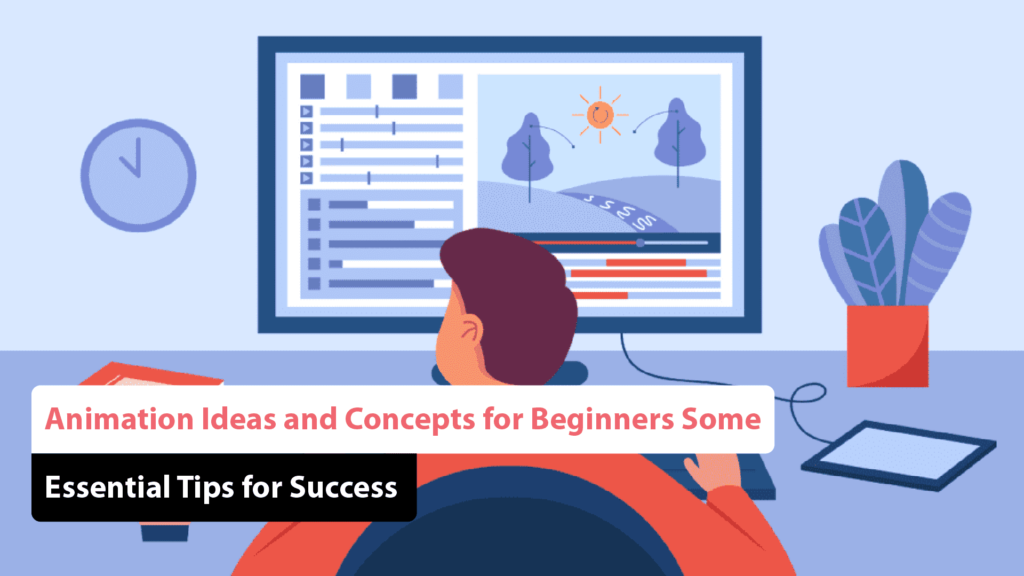
Animation is no longer limited to large studios or professionals. In 2025, more people than ever are diving into the world of animation thanks to accessible software, online learning resources, and affordable tools. Whether you’re a student, hobbyist, or aspiring animator, understanding the Basics of Animation for Beginners is essential to get started on the right foot.
This comprehensive guide explores Animation Ideas for Beginners, introduces key Beginner Animation Concepts, shares Essential Animation Tips, and breaks down the Best Animation Techniques for Beginners to set you up for creative success. Whether you want to animate simple characters, tell a story, or bring your designs to life, this guide will walk you through the essentials.
1. How to Start Animation: A Beginner’s Perspective
If you’ve ever wondered How to Start Animation, you’re not alone. The good news is that animation is more accessible than ever. Here’s how you can begin your journey in animation:
✔ Choose Your Animation Type: Decide whether you want to explore 2D, 3D, stop-motion, or motion graphics.
✔ Pick Beginner-Friendly Tools: Start with intuitive software like Pencil2D, OpenToonz, or Krita.
✔ Learn the Basics: Focus on frame-by-frame animation, keyframes, and timing.
✔ Follow Online Tutorials: Platforms like YouTube and Skillshare offer great beginner courses.
✔ Start Small: Work on short animation loops before jumping into complex projects.
Following this path gives you a solid foundation to experiment with Creative Animation Ideas and grow your skills.
2. Beginner Animation Concepts: What You Need to Know
Mastering Beginner Animation Concepts is the key to building a successful animation workflow. These core ideas are essential to every animation, regardless of the style or tool you use.
Key Concepts:
✔ Timing and Spacing: Determines how fast or slow objects move and how smooth the animation feels.
✔ Squash and Stretch: Adds elasticity and life to characters.
✔ Anticipation: Prepares the audience for the main action, making movement feel natural.
✔ Ease In and Ease Out: Slows down animation at the beginning or end for more realism.
✔ Follow-Through and Overlapping Action: Makes animation more dynamic and fluid.
These foundational principles help you create believable motion and are part of the Best Animation Techniques for Beginners.
3. Animation Ideas for Beginners: Creative and Fun Projects
Coming up with Animation Ideas for Beginners can be challenging, but the key is to start with simple, achievable goals. Here are a few Creative Animation Ideas to try:
✔ Bouncing Ball Animation: Practice squash, stretch, and timing.
✔ Walk Cycle: A basic but crucial project that teaches character movement.
✔ Animating a Face Emoji: Use simple shapes to express emotions.
✔ Object Transformation: Animate one object morphing into another.
✔ Looping GIFs: Create short, shareable animations for social media.
✔ Simple Dialogue Scenes: Animate a conversation using basic mouth shapes and timing.
These projects allow beginners to experiment and apply Essential Animation Tips in a hands-on way.
4. Essential Animation Tips for Beginners
Learning animation takes time, but following these Essential Animation Tips can speed up your progress:
✔ Keep It Simple: Don’t try to create a Pixar-level short on your first try.
✔ Use Reference Footage: Study real-life movement to understand natural motion.
✔ Plan Before You Animate: Use storyboards and thumbnails to map out your ideas.
✔ Test Constantly: Play back your animation frequently to catch mistakes early.
✔ Stay Consistent: Use consistent frame rates and sizes for smoother results.
✔ Seek Feedback: Join online animation communities and ask for constructive criticism.
Applying these tips ensures your learning curve is steep yet enjoyable.
5. Best Animation Techniques for Beginners in 2025
Here are the Best Animation Techniques for Beginners that are trending in 2025:
✔ Frame-by-Frame Animation: Master traditional animation by drawing each frame.
✔ Cut-Out Animation: Use digital puppets or layers to animate characters easily.
✔ Tweening: Let the software generate frames between two positions for smooth transitions.
✔ Onion Skinning: Helps track the movement of previous frames while animating.
✔ Motion Capture (MoCap): Some beginner tools now include simple motion tracking features.
✔ Lip Syncing: Sync animated characters to voice recordings.
These techniques will help you create polished animations even as a beginner.
6. Step-by-Step Animation Guide: From Concept to Creation
This Step-by-Step Animation Guide walks you through the basic workflow from idea to finished animation:
Step 1: Brainstorm Your Concept
✔ Come up with a short scene or story.
✔ Decide the tone (funny, emotional, educational, etc.).
Step 2: Write a Script or Outline
✔ Even for a short project, having a script helps you stay organized.
Step 3: Create a Storyboard
✔ Sketch each major scene or action.
✔ Think about camera angles and timing.
Step 4: Design Characters & Backgrounds
✔ Keep designs simple and adaptable.
✔ Use digital tools or draw by hand.
Step 5: Animate
✔ Set your frame rate (12–24 FPS is standard).
✔ Start with key poses, then add in-between frames.
✔ Use layers for different parts of your animation.
Step 6: Add Sound
✔ Use free sound effects and royalty-free music.
✔ Record dialogue if needed.
Step 7: Export & Share
✔ Render your video in MP4 or GIF format.
✔ Share on YouTube, TikTok, or art platforms.
This structured workflow will help you stay focused and build confidence as you explore more complex animations.
7. Basics of Animation for Beginners: Must-Know Fundamentals
Before diving deeper, it’s important to grasp the Basics of Animation for Beginners, which form the foundation of all animation styles.
Core Fundamentals:
✔ Keyframes: Main frames that mark important positions or changes in the animation.
✔ In-betweens: The frames between keyframes that create motion.
✔ Frame Rate: The number of frames shown per second. More frames = smoother animation.
✔ Timing: Affects the rhythm and speed of the movement.
✔ Storytelling: Even a short animation should have a clear beginning, middle, and end.
Understanding these basics ensures you create animations that are not only technically sound but also emotionally resonant.
8. Animation Tools and Software for Beginners in 2025
Here are some beginner-friendly tools that make animation accessible in 2025:
✔ Pencil2D: Free and open-source 2D animation software.
✔ Krita: Great for frame-by-frame hand-drawn animation.
✔ OpenToonz: Used by Studio Ghibli and free for beginners.
✔ Blender: Offers a full 3D animation suite.
✔ Toon Boom Harmony Essentials: A professional tool with a beginner-friendly version.
✔ Adobe Character Animator: Automates facial animations with webcam input.
These tools support a variety of Beginner Animation Concepts and workflows to help bring your ideas to life.
9. Overcoming Common Challenges for Beginners
Every beginner faces hurdles. Here are tips to overcome them:
✔ Struggling with Timing? Use reference videos and adjust your spacing.
✔ Can’t Finish Projects? Keep your scope small and set milestones.
✔ Overwhelmed by Tools? Focus on mastering one software before trying others.
✔ Feeling Uninspired? Watch animations, join online forums, or take breaks to recharge.
✔ Comparing with Pros? Remember, everyone starts as a beginner—focus on progress, not perfection.
Facing and overcoming these challenges is part of the growth process for every animator.
10. Career and Learning Pathways in Animation
If you’re serious about animation, there are multiple paths to pursue:
✔ Freelance Animator: Start with small gigs and build a portfolio.
✔ Join an Animation Studio: Gain experience by working on larger projects.
✔ Content Creator: Use platforms like YouTube or TikTok to share your animations.
✔ Animator for Games or Apps: Mobile and web games need animated characters and effects.
✔ Animation Educator: Share your knowledge through tutorials and courses.
Continuing to learn and practice is the key to long-term success.
Final Thoughts:
Your Animation Journey Starts Today
In 2025, there’s never been a better time to get started with animation. Whether you’re dabbling for fun or dreaming of a creative career, the tools and resources are within your reach. By following these Essential Animation Tips, exploring Creative Animation Ideas, and mastering Beginner Animation Concepts, you’ll develop a strong foundation that will support your growth as an animator.
From simple bounce animations to more complex character movements, each project you complete brings you one step closer to your creative goals. Embrace the process, celebrate your progress, and don’t be afraid to experiment.
The world of animation is vast and full of potential. With the right mindset and commitment, your journey from beginner to skilled animator can begin today.
Frequently Asked Questions (FAQ’s)
What is animation, and how does it work?
Animation is the process of creating the illusion of movement by displaying a series of individual images, or frames, in rapid succession. This can be achieved through various techniques, including 2D animation, 3D animation, stop-motion, and more. Each frame is slightly different from the one before it, and when played in sequence, it creates the perception of movement.
What software is best for beginners in 2D animation?
For beginners, user-friendly software options include:
- Adobe Animate: A versatile tool for creating 2D animations.
- Toon Boom Harmony: Industry-standard software with a range of features for 2D animation.
- OpenToonz: Free and open-source software suitable for various animation styles.
- Synfig Studio: A free software focused on vector-based animation.
How can I generate animation ideas?
To generate animation ideas, consider:
- Drawing inspiration from personal experiences or emotions.
- Adapting favorite literary works or songs into animated formats.
- Observing everyday life, including people, nature, and local culture.
- Exploring themes relevant to current social issues or personal beliefs.
- Experimenting with different art styles and techniques.
What are some simple animation project ideas for beginners?
Here are a few ideas to get started:
- A short story about a pet exploring its surroundings.
- An animated daily routine of a character with a humorous twist.
- A visual representation of a favorite song or poem.
- A simple character who overcomes a small obstacle whimsically.
How do I create an engaging character for my animation?
To create an engaging character:
- Develop a clear backstory that informs their motivations and personality.
- Design distinctive visual traits that make them memorable.
- Give them relatable struggles or aspirations that resonate with the audience.
- Ensure they undergo some form of growth or change throughout the story.





